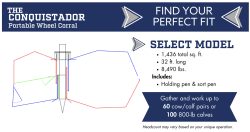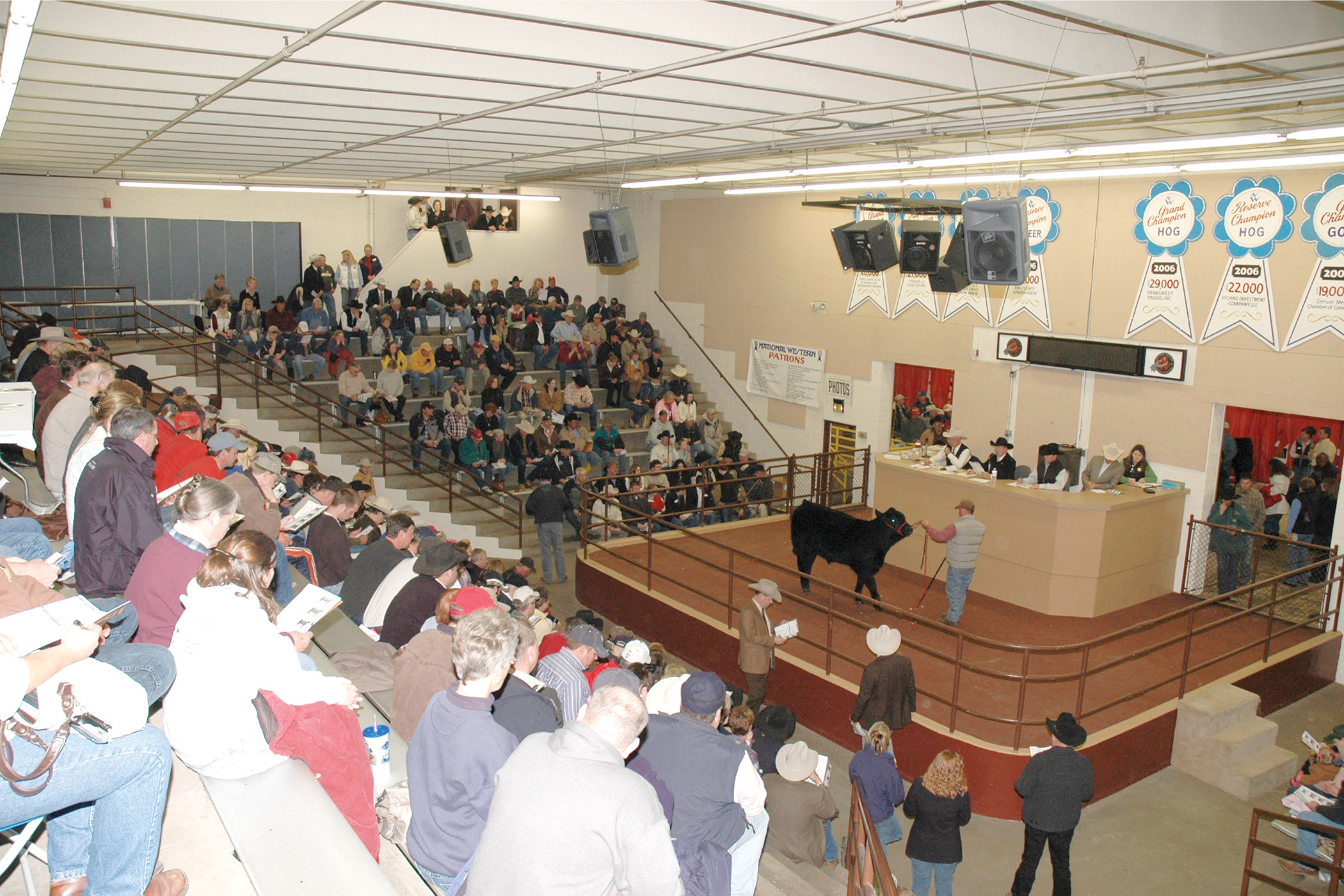MJE Livestock Equipment Unveils New Sizes of the Conquistador Wheel Corral, Integrates Allflex Ear Tag Reader
Article courtesy of MJE Livestock Equipment
MJE Livestock Equipment, a pioneer in livestock management solutions, has expanded its Conquistador Wheel Corral lineup with new models tailored to fit ranches of every size. Demonstrating a deep commitment to innovation and herd health, the new corrals are engineered to improve ranching operations, enhance animal well-being, and increase profitability.
The latest additions to the Conquistador range, including the compact Select model and heavy-duty 11-gauge steel options for all models, offers ranchers options from compact to spacious. Each model is meticulously designed to promote stress-free handling, which is essential in maintaining cattle health and achieving significant weight gains. The Select Model is perfect for smaller herds, while the Choice and Prime models cater to larger operations with their generous space and flexible configurations.
The new Select Plus model offers an expansion capacity, seamlessly growing with the rancher’s herd, and the HD option underscores MJE’s dedication to durability with its heavy-duty steel construction.
These options ensure that ranchers can select a corral that meets their current needs and adapts to future growth.
In a move that further solidifies MJE Livestock Equipment’s position at the forefront of agricultural innovation, the company has integrated the Allflex Ear Tag Reader technology into the Conquistador corrals. This integration provides ranchers with a cutting-edge tool for efficient livestock management, allowing for accurate tracking and data collection that supports informed decision-making and optimized herd management practices.
Quick setup times and solar-powered hydraulics across all Conquistador models exemplify MJE’s dedication to efficiency and sustainability. The user-friendly design empowers ranchers to focus on what matters most—raising healthy, profitable cattle.
MJE Livestock Equipment’s latest innovations reflect a continued commitment to empowering ranchers with tools that enhance their operations’ efficiency, safety, and profitability. By offering corrals that align with the size and needs of every herd, MJE ensures that cattle health and rancher success go hand in hand.
Ranchers interested in the new Conquistador Wheel Corral models and the advanced Allflex Ear Tag Reader technology are encouraged to visit their local MJE dealer to discover how these innovations can transform their livestock management and contribute to a more profitable ranching future.
About MJE Livestock Equipment
MJE Livestock Equipment makes the lives of farmers and ranchers easier through strategic herd management advice, facility design, and American-made livestock equipment built with innovation that makes ranching easier and cattle safe, healthy, and happy.
To learn more about MJE Livestock Equipment and become part of their fast-growing network of dealers, visit our website: www.mjelivestockequipment.com/dealers
For additional information, the news media should contact:
Megan Elsey
Director of Public Relations and Marketing
MJE Livestock Equipment
megan@mjellc.net
(620) 846-2634



